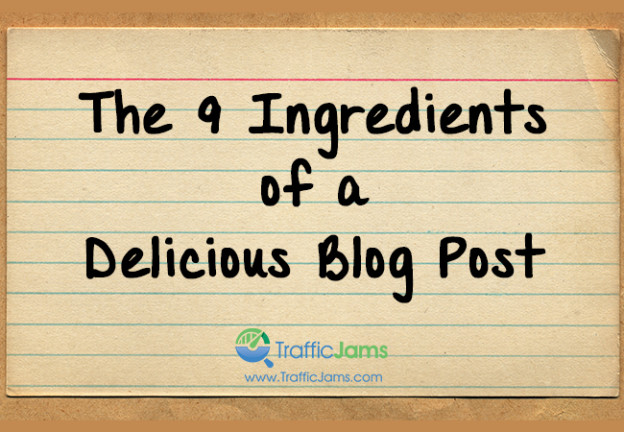Have you ever wanted to replicate a recipe, but didn’t know all of the ingredients? It’s almost impossible to perfect something without following some kind of recipe or guidelines. There are many different benefits of blogging. However, the only way to genuinely benefit from blogging is to create high-quality blogs. Here are some of the most important ingredients to a juicy and delicious blog post.
- A purpose: Has a friend ever told you a story that seemed to last forever? All you could think the entire time was “Get to the point!” Well, believe it or not this can translate into a blog post as well. If you are writing up a blog, it needs to have a point. Time is valuable and if you waste someone’s time even just once, they are far less likely to visit your blog in the future. Remember, the goal is to become an industry resource. If you are just writing a blog post to write one, and fill it up with filler words, readers will become uninterested and move on to a competitors’ site.
- A clever title: One of the first things people are taught about writing is creating an eye-catching title. Why should people read your blog post? Why is it better than other posts on the same topic? You grab in readers with a title and keep them there with your content. Did you know that 80% of people will read your headlines and only 20% of those people will continue reading the rest of your content? You can’t reverse a bad first impression, so it’s crucial to make a good one. With blog posts, your first impression on people is your title, so you’ve got to make it great.
- Extraordinary content: Not only must your content be interesting, but it must also be completely original. Though you may source other sites and cite them, it’s important to beef up your articles and blog posts with original content, as copying others content will result in a punishment from Google, which can eliminate your website/blog from search results.
- Structure: Just as there is an order for a recipe, you must have a method to your madness when writing blog posts as well. It’s important to put supporting points in an order that make sense and leads up to your main point. Additionally, it’s key to include bullet points, numbering, indented paragraphs, bolded words, underlines, and italics. This helps to establish hierarchy so that readers know major points and what they need to remember.
- Images: Though the most important part of a blog post is the high quality content, it’s important to have images to enhance your content. Images aren’t just added to make the blog post pretty. They are meant to be supplementing pieces to your content. This doesn’t mean you should add a bunch of images to your blog post. Only add images that genuinely add to the quality of the post.
- Significant length: Even though the saying goes quality over quantity, it’s still important to make your blog post reaches a substantial length. Oftentimes, points don’t get made or are rushed and not explained if the length of a post is short. So, exactly how long should your blog post be? Well, there is no definite answer. However, longer is better. Blog posts should be about a minimum of 500 words, but always shoot for more.
- Internal and External Linking: A blog post is much more fulfilling when it links to other pages with more info. Perhaps you touch on a topic in your blog post that you can’t elaborate on without going off on a tangent. That’s when you simply link to another source that can explain the topic further in depth. For example, sometimes supporting points are statistics. Not only do statistics further prove points you are making, but it allows you to link to other great industry resources. Linking to other sites is called external linking. You don’t only want to externally link, however. It’s important to also internally link. Internal linking essential means linking to other blog posts or pages within your website that can offer more info on a topic or service that you offer.
- Spelling and Grammar check: Typos aren’t the end of the world, but can easily be prevented by proofreading and copy-editing. After you’re doing writing a blog post, don’t simply rely on the spell check tool and the squiggly red lines. Instead, use the spell check tool and go back and re-read your content. Do this several times. You’d be surprised what you wind up changing. Greatness should never be rushed.
- A call to action: The purpose of your blog post for readers may be to make them knowledgeable on a specific topic, but more often than not, the true purpose of your blog post is to drive sales. In order to do so, you must include a call to action at the end of every blog post, which includes why and how they should contact you. Typically, it’s best to provide a link to a contact form, an email and a phone number so that readers have several options to get in touch with you.
Of course writing a great blog post always depends on what the subject matter is. But these 9 ingredients are a great start to comprising a fantastic blog.
Don’t have time to write delectable blog posts? Traffic Jams can write them for you!
Contact us today at sales@trafficjams.com or 855-599-9998.

